Abstract
Characterizing the functions of the many genes discovered by the sequencing projects is now the primary focus of genome-scale studies. Although sequence or structure-based comparisons are helping to generate hypotheses on the biochemical functions of many gene products, determining the in vivo role(s) for large sets of genes remains a critical objective. RNA interference (RNAi) offers a rapid way to gain a first look at loss-of-function phenotypes associated with specific genes. So far RNAi has been used to test the function of a third of the predicted genes in the Caenorhabditis elegans (C. elegans) genome, and it can be expected that a first pass survey of the entire genome will soon be completed. From the current body of work an initial estimate of the power and challenges of using RNAi for genome-wide analyses can be made. A comparison of results obtained from independent large-scale RNAi studies reveals that despite a high degree of congruence, no single study is likely to achieve a comprehensive RNAi-based phenotypic ”map“ of the C. elegans genome instead a more accurate picture will be assembled from a composite of independent results for the same genes. RNAi analysis, together with other functional genomic approaches such as expression profiling and protein interaction mapping, is transforming C. elegans into a premier model system for the development and integration of functional genomic approaches in a metazoan.
Keywords: Rnai-based functional genomics, Caenorhabditis elegans
Current Genomics
Title: RNAi-Based Functional Genomics in Caenorhabditis elegans
Volume: 3 Issue: 2
Author(s): F. Piano and K. Gunsalus
Affiliation:
Keywords: Rnai-based functional genomics, Caenorhabditis elegans
Abstract: Characterizing the functions of the many genes discovered by the sequencing projects is now the primary focus of genome-scale studies. Although sequence or structure-based comparisons are helping to generate hypotheses on the biochemical functions of many gene products, determining the in vivo role(s) for large sets of genes remains a critical objective. RNA interference (RNAi) offers a rapid way to gain a first look at loss-of-function phenotypes associated with specific genes. So far RNAi has been used to test the function of a third of the predicted genes in the Caenorhabditis elegans (C. elegans) genome, and it can be expected that a first pass survey of the entire genome will soon be completed. From the current body of work an initial estimate of the power and challenges of using RNAi for genome-wide analyses can be made. A comparison of results obtained from independent large-scale RNAi studies reveals that despite a high degree of congruence, no single study is likely to achieve a comprehensive RNAi-based phenotypic ”map“ of the C. elegans genome instead a more accurate picture will be assembled from a composite of independent results for the same genes. RNAi analysis, together with other functional genomic approaches such as expression profiling and protein interaction mapping, is transforming C. elegans into a premier model system for the development and integration of functional genomic approaches in a metazoan.
Export Options
About this article
Cite this article as:
Piano F. and Gunsalus K., RNAi-Based Functional Genomics in Caenorhabditis elegans, Current Genomics 2002; 3 (2) . https://dx.doi.org/10.2174/1389202024605224
| DOI https://dx.doi.org/10.2174/1389202024605224 |
Print ISSN 1389-2029 |
| Publisher Name Bentham Science Publisher |
Online ISSN 1875-5488 |
Call for Papers in Thematic Issues
Current Genomics in Cardiovascular Research
Cardiovascular diseases are the main cause of death in the world, in recent years we have had important advances in the interaction between cardiovascular disease and genomics. In this Research Topic, we intend for researchers to present their results with a focus on basic, translational and clinical investigations associated with ...read more
Deep learning in Single Cell Analysis
The field of biology is undergoing a revolution in our ability to study individual cells at the molecular level, and to integrate data from multiple sources and modalities. This has been made possible by advances in technologies for single-cell sequencing, multi-omics profiling, spatial transcriptomics, and high-throughput imaging, as well as ...read more
New insights on Pediatric Tumors and Associated Cancer Predisposition Syndromes
Because of the broad spectrum of children cancer susceptibility, the diagnosis of cancer risk syndromes in children is rarely used in direct cancer treatment. The field of pediatric cancer genetics and genomics will only continue to expand as a result of increasing use of genetic testing tools. It's possible that ...read more
 2
2
- Author Guidelines
- Bentham Author Support Services (BASS)
- Graphical Abstracts
- Fabricating and Stating False Information
- Research Misconduct
- Post Publication Discussions and Corrections
- Publishing Ethics and Rectitude
- Increase Visibility of Your Article
- Archiving Policies
- Peer Review Workflow
- Order Your Article Before Print
- Promote Your Article
- Manuscript Transfer Facility
- Editorial Policies
- Allegations from Whistleblowers
- Announcements
Related Articles
-
Demonstration of the Efficacy of Statins in Resolution of Plaque Inflammation by Serial FDG Imaging
Immunology, Endocrine & Metabolic Agents in Medicinal Chemistry (Discontinued) Epidemiological Evidence Associating Secondhand Smoke Exposure with Cardiovascular Disease
Inflammation & Allergy - Drug Targets (Discontinued) Membrane and Soluble Forms of Endoglin in Preeclampsia
Current Molecular Medicine Muscular Dystrophies: Histology, Immunohistochemistry, Molecular Genetics and Management
Current Pharmaceutical Design Meloxicam Prevents Load-Induced Cardiac Hypertrophy in Mice
Immunology, Endocrine & Metabolic Agents in Medicinal Chemistry (Discontinued) Innovations in Transdermal Drug Delivery: Formulations and Techniques
Recent Patents on Drug Delivery & Formulation Parthenogenetic Cell Lines: An Unstable Equilibrium Between Pluripotency and Malignant Transformation
Current Pharmaceutical Biotechnology Fragment-Based Drug Discovery and Molecular Docking in Drug Design
Current Pharmaceutical Biotechnology CD36 as a Therapeutic Target for Endothelial Dysfunction in Stroke
Current Pharmaceutical Design Anticancer Agents Derived from Natural Products
Mini-Reviews in Medicinal Chemistry DAB389EGF Fusion Protein Therapy of Refractory Glioblastoma Multiforme
Current Pharmaceutical Biotechnology Involvement of Tachykinins in Intestinal Inflammation
Current Pharmaceutical Design Update on the Medical Treatment of Allergic Rhinitis
Inflammation & Allergy - Drug Targets (Discontinued) Melanogenesis and Melanosome Transportation Modulators from Medicinal Plants
Letters in Drug Design & Discovery Signal Transducer and Activator of Transcription 5 (STAT5), a Crucial Regulator of Immune and Cancer Cells
Current Drug Targets - Immune, Endocrine & Metabolic Disorders Editorial [Hot Topic: The Role of Cytokines in Neurodegeneration and Psychiatric Conditions: Multiple Mechanisms of Action (Executive Editor: Shawn Hayley)]
Current Pharmaceutical Design Cytokines as Therapeutic Targets to Reduce Cardiovascular Risk in Chronic Inflammation
Current Pharmaceutical Design Understanding Functional Residues of the Cannabinoid CB1 Receptor for Drug Discovery
Current Topics in Medicinal Chemistry Controlled-release Particulate Cytokine Adjuvants for Cancer Therapy
Endocrine, Metabolic & Immune Disorders - Drug Targets Antibody Fusion Proteins: Applications in Brain Targeting
Current Medicinal Chemistry - Central Nervous System Agents












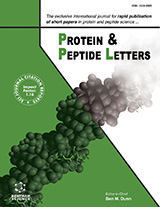
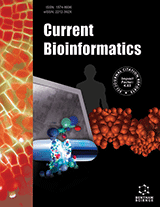
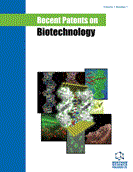
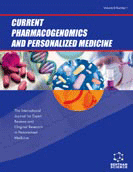
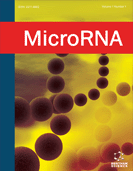
.jpeg)








